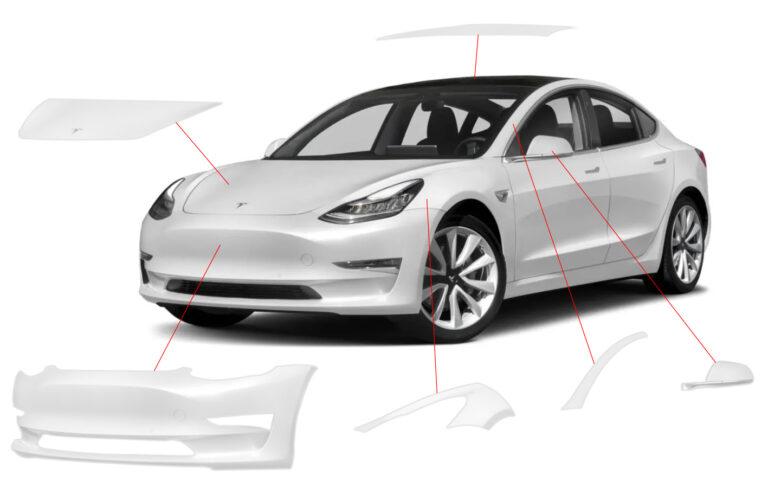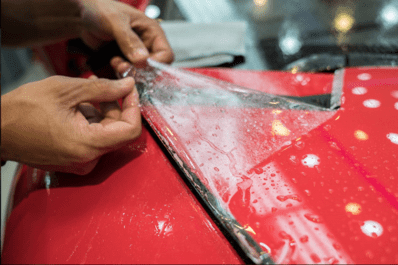Paint Protection Films or PPF is an aftermarket product that is applied to protect the paint surface on a vehicle. It is generally made from polyurethane-based substances and it is transparent. It protects the paint from scratches, chips, and other contaminants that could damage the paint on your vehicle. Originally, PPF was invented to protect helicopter rotor blades from shrapnel, debris, and dust during the Vietnam War. In the 80s, this lightweight film was used to protect race cars from rocks and rubber flying on the track as well as close contact driving. Crazy enough, it is still used for those applications today. However, more people are identifying PPF to ensure their vehicle is protected from environmental hazards and debris.
How do Paint Protection Films actually work?
The protection comes from the thickest portions of the urethane layers. When a rock hits the car, it typically hits with a jagged edge which decreases the surface area of impact to a very small space. Automotive paint will chip and crack due to those harsh impacts. Over time, these chips and cracks will make the paint look undesirable. When PPF is applied, it helps spread the impact over the film which absorbs most of the force and saves the paint from chipping away. It’s good to note that higher-end lines of PPF films have a self-healing property that activates when the film is heated by a heat gun or even just ambient heat from the sun.
What are the top 3 benefits of Paint Protection Films?
1. It looks great! PPF film can enhance the finish of your vehicle, leaving it looking new for years to come. Most people who apply this film either do it for long-term protection, or for leases on vehicles where the paint needs to be protected during the lease time. There are also different types of PPF that you can use to modify the gloss or matte finish on your vehicle. It would ultimately depend on your tastes.
2. Superior Protection against chemicals and corrosion. Having PPF on your vehicle can help protect it against harsh chemicals and additional rock chips which, when moisture and chemicals get under the paint, can end up producing rust areas on your vehicle. In some provinces like BC, they like to use road salts for traction, which ends up increasing the chances of rusting.
3. Healing of Minor Scratches. As stated above, the higher quality Paint Protection films can self-heal many minor scratches or swirls that usually plague a vehicle. Keeping your vehicle clean and protected can help hold the resale value of your vehicle. When you consider how much it costs to repaint a vehicle, the PPF route is a much more cost-effective choice if you are planning to keep a vehicle in good condition in the long run.
Can I install the Paint Protection Films myself?
Although you can purchase PPF films from a designated vendor, we highly recommend leaving the installation to the professionals. This isn’t an application that you can DIY over a weekend with amazing results. The amount of imperfections on the vehicle’s curves and edges that you may not notice is high! You want to ensure that the PPF is installed correctly the first time. PPF professionals like Kimbros have years of experience working with various vehicles, perfecting their installations, and different forms of films. The preparation alone in ensuring that the Paint Protection Films are installed properly is enough for most people to avoid trying it themselves and leaving it to those who have the experience. You won’t regret it.
If you’re looking to install PPF films, ceramic coatings, vinyl wraps, or other aftermarket protection products for your vehicle, Kimbros offers the best work! Check out our gallery page to see us in action. Looking to book an appointment/consultation? Give us a call today at 587-807-6380. We look forward to hearing from you!



